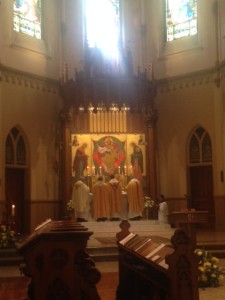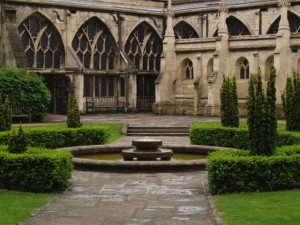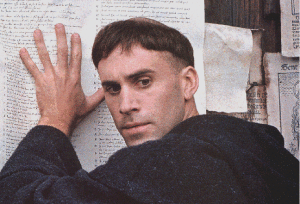It is common to use evergreen boughs to decorate for the Christmas season. Like the image of the Burning Bush, the evergreen points us toward a mysterious source of life, a current just beneath the surface of our world, bursting through like a hidden spring at certain moments. Amid the entropy of our deciduous (Latin decidere, to fall into ruin, to die) world, signs point us toward this inexhaustible font. The contrast between the autumnal coloring of leaves and the steady greenery of needles, like the contrast between the sidereal firmament and plummeting meteors, speaks to us of a contrast between a permanent world, as yet only hinted-at, and the restless burgeoning and decay of the palpable. 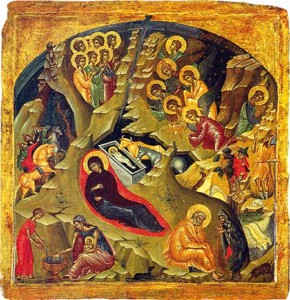
The signs of permanence and stability, the evergreens, the stars, the Burning Bush, appear very much within our world of flux. This is itself significant, for it suggests that our salvation is not so much a separation from the material as it is a rejuvenation of the very cosmos itself. So says Saint Paul:
“Creation was subjected to futility, not of its own will but by the will of him who subjected it in hope; because the creation itself will be set free from its bondage to decay and obtain the glorious liberty of the children of God.”
—Romans 8: 20-21
It is because of this link between our salvation and the liberation of creation that the prophecies of the Old Testament have retained their value. Even after the Fall, creation has borne traces of its lost transparency as well as its destined rebirth. This is to say that creation itself has continued to point toward God its boundless Source. “Ever since the creation of the world [God’s] invisible nature, namely, his eternal power and deity, has been clearly perceived in the things have been made [Romans 1: 20].”
Danger enters from the darkening of our intelligence that followed on the loss of trust in God. The Tree of the Knowledge of Good and Evil lost its sign value as a marker of God’s love and guardianship of Adam and Eve and became (falsely, by the trickery of the serpent) a counter-sign of a supposed arbitrary tyranny. Once faith has been broken by this kind of mistrust, creation ceases to speak lucidly. We ourselves are tempted to be entrapped by the disintegrative forces unleashed by sin, to try and hold on to creatures whose decay is meant to warn us to return to the source of life.
According the Wisdom of Solomon, our predicament can be thus summarized:
“From the greatness and beauty of created thing comes a corresponding perception of their Creator….as [the pagans] live among his works…they trust in what they see, because the things that are seen are beautiful….But [they are] miserable, with their hopes set on dead things.”
—Wisdom 13: 6-7; 10
Even the chosen people of Israel needed constant reminding of the invisible and immaterial God Who communicates through the visible and material. It is significant (another “sign-being-made”) that in Hebrew, the same word, dabar, means “word” and “thing”—a commingling of the spiritual and the perceptible. The prophets communicated not only by speaking, but by proto-sacramental actions and objects. All of these point to the mystery that we celebrate this night, the sudden illumination, not of a lowly shrub on the side of Mount Horeb, but of the human race and all creation by the Motherhood of the Virgin Mary.
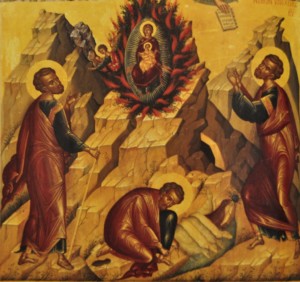 We can describe in minute detail how conception takes place, in terms of the mingling of genetic material and the implantation of an embryo in the tissue of its mother’s womb. But can we perceive how a human life, consciousness, the whole mystery of personhood is set in motion by these intricate biological events? Once more we are brought to the boundary between contingent materiality, and the mysterious Source of life itself. This Source has been at work since the beginning of time. Moses and the prophets, culminating in John the Baptist, pointed to its manifestations, celebrated in tonight’s antiphons. We the baptized have the joy of partaking in it:
We can describe in minute detail how conception takes place, in terms of the mingling of genetic material and the implantation of an embryo in the tissue of its mother’s womb. But can we perceive how a human life, consciousness, the whole mystery of personhood is set in motion by these intricate biological events? Once more we are brought to the boundary between contingent materiality, and the mysterious Source of life itself. This Source has been at work since the beginning of time. Moses and the prophets, culminating in John the Baptist, pointed to its manifestations, celebrated in tonight’s antiphons. We the baptized have the joy of partaking in it:
“For in the mystery of the Word made flesh/a new light of your glory has shone upon the eyes of our mind,/so that, as we recognize in [Christ] God made visible,/we may be caught up through him in love of things invisible.”
—Preface I of the Nativity
May your New Year be filled with the illumination of the Son of God and His immaculate Mother! May we learn anew how to live sacramentally, pointing others to God’s manifestations in our world today.
Merry Christmastide!
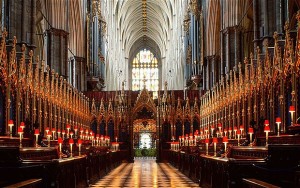
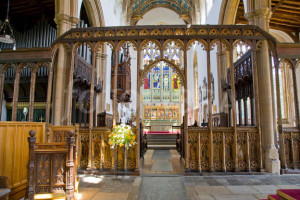
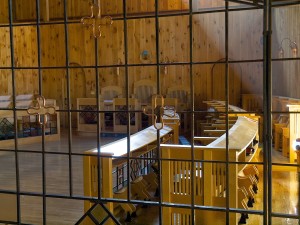
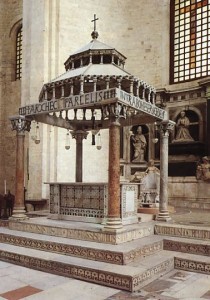
![Christ's Ascension is the founding movement of every liturgical celebration. Now He intercedes for us at the right hand of the Father [Romans 8: 34].](https://chicagomonk.org/wp-content/uploads/2015/07/ascension-coptic-215x300.jpg)
